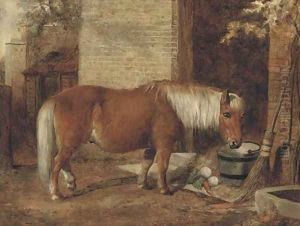William Snr Shayer Paintings
William Shayer Senior was a distinguished 19th-century English landscape and animal painter, born in Southampton, England, in 1787. His career spanned over six decades, during which he became renowned for his ability to capture the bucolic charm of the English countryside, often populated with animals and figures. Shayer's work reflects a deep appreciation of nature and rural life, characteristics that endeared his paintings to collectors and the public alike.
Shayer received no formal art education but began his artistic career at a young age, initially working as a coach painter in Guildford and subsequently in London. This early experience with decorative painting and craftsmanship would later influence his fine attention to detail in his landscape and animal compositions. By the early 1820s, Shayer had returned to Southampton, where he devoted himself entirely to fine art, painting scenes of the local countryside, coastal views, and later, scenes of the Scottish Highlands, which he visited in the 1840s.
Though largely self-taught, Shayer developed a style that was both picturesque and highly detailed, showing a particular talent for depicting light and atmosphere. His works often included figures engaged in daily rural tasks, adding a narrative element that brought his landscapes to life. Shayer's ability to render the textures of foliage, animal fur, and rustic architecture with precision made his paintings popular among a wide audience, including the middle-class patrons who were emerging as significant art collectors during the Victorian era.
William Shayer Senior exhibited extensively throughout his career, including at prestigious institutions such as the Royal Academy, the British Institution, and the Society of British Artists, of which he was a member. Despite his success, Shayer never sought the limelight, preferring to let his work speak for itself. His paintings are now held in numerous public and private collections, testament to his enduring appeal.
Shayer's family also had artistic talents; his sons, William Joseph Shayer and Henry Thring Shayer, followed in their father's footsteps and became accomplished painters in their own right. This artistic legacy, carried on through his sons, ensured that the Shayer name remained synonymous with quality landscape and animal painting in the English tradition.
William Shayer Senior passed away in 1879, leaving behind a rich body of work that continues to be celebrated for its contribution to 19th-century British art. His paintings capture a bygone era with a realism and affection that speak to modern audiences, ensuring his place among the notable landscape artists of his time.
